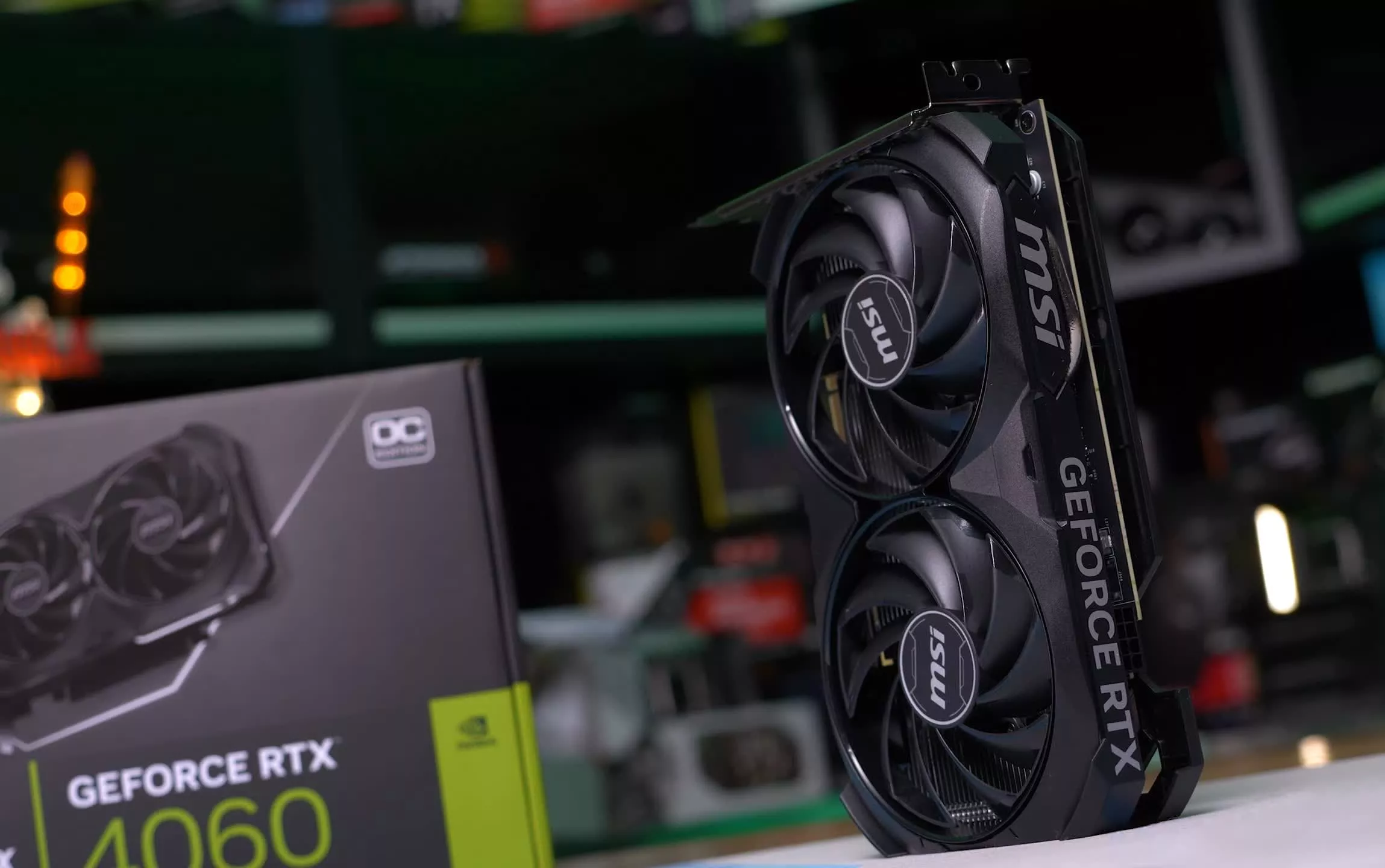What just happened? There's no better indicator of a product not selling well than it being discounted within a week of release. Sadly for Nvidia, that's exactly what's happened with the RTX 4060, which has seen a 6% price reduction in some European countries.

The RTX 4060 arrived last week to very middling reviews and apathy from consumers, especially as it doesn't compare favorably to the previous-gen RTX 3060.
VideoCardz discovered that the Lovelace product is already being discounted in Europe. German retailer Mindfactory dropped 20 euros off the price, bringing it to €310.39. It's also claimed that the popular company sold just ten RTX 4060 units on its launch day.
Over in France, retailer Hardware.fr has reduced the MSI Ventus 2X RTX 4060, which launched at its €329 MSRP a week ago, to €309 through the use of coupons.
The reductions mean that the RTX 4060 has been discounted by 6% in a matter of days after launch, something previously unheard of when talking about new Nvidia graphics cards. There's no sign of similar price drops coming to the US where the $299 MSRP remains unchallenged, but don't be surprised if that changes in the near future.
It's not just Europe where the RTX 4060 is proving to be a hard sell. In Japan, where the launch-day sales embargo usually lifts at 10 pm, the once familiar sight of people lining up to secure a new card was replaced with the sad image of a single person waiting at one of the country's big PC stores: a man upgrading his GTX 1060.
ãÂÂã¢ãÂãÂÂ�-æÂÂçÂ�'çµÂå±ÂãÂÂ�'ã½ã³ã³工æ¿ ç§Â�'�åÂÂæ¬�-ã§1åÂÂãÂÂ購�...��-ã¦çµÂäºÂ�-ã¾�-ãÂÂãÂÂ売ãÂÂãÂÂã®ã¯MSIãÂÂGeForce RTX 4060 GAMING X 8GãÂÂãÂÂGeForce GTX 1060ãÂÂãÂÂ�...�-ã¶ãÂÂã®�-ãÂÂæÂÂãÂÂã¨ã®äºÂã§�-ã pic.twitter.com/8vagoFlZzu
– ã¨ã«ãÂÂã¿ã¼ã¸ãÂ¥ç§Â�'�åÂÂç·¨éÂÂé¨ (@hermita_akiba) June 29, 2023
Somewhat tellingly, the RTX 3060, which actually outperforms the RTX 4060 in some games, has been flying up the Steam survey GPU chart recently, becoming the second-most-popular graphics card among participants last month.
We noted in our review of the RTX 4060 that while it isn't as bad as the Ti version, it's certainly not worth buying at $300. But if the lack of US sales forces significant price reductions in the States, it could become a more appealing option.
https://www.techspot.com/news/99295-nvidia-rtx-4060-price-drops-europe-following-poor.html